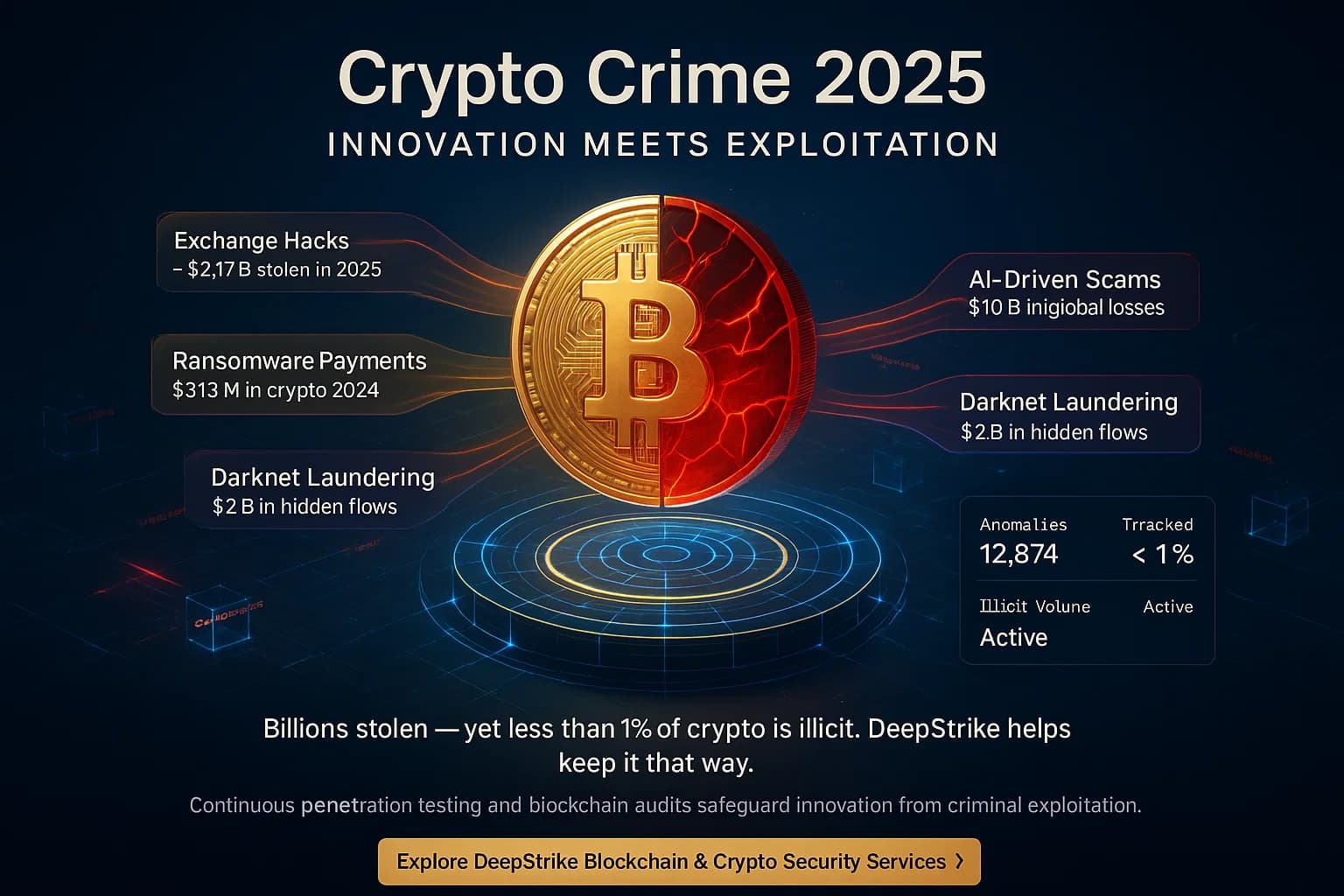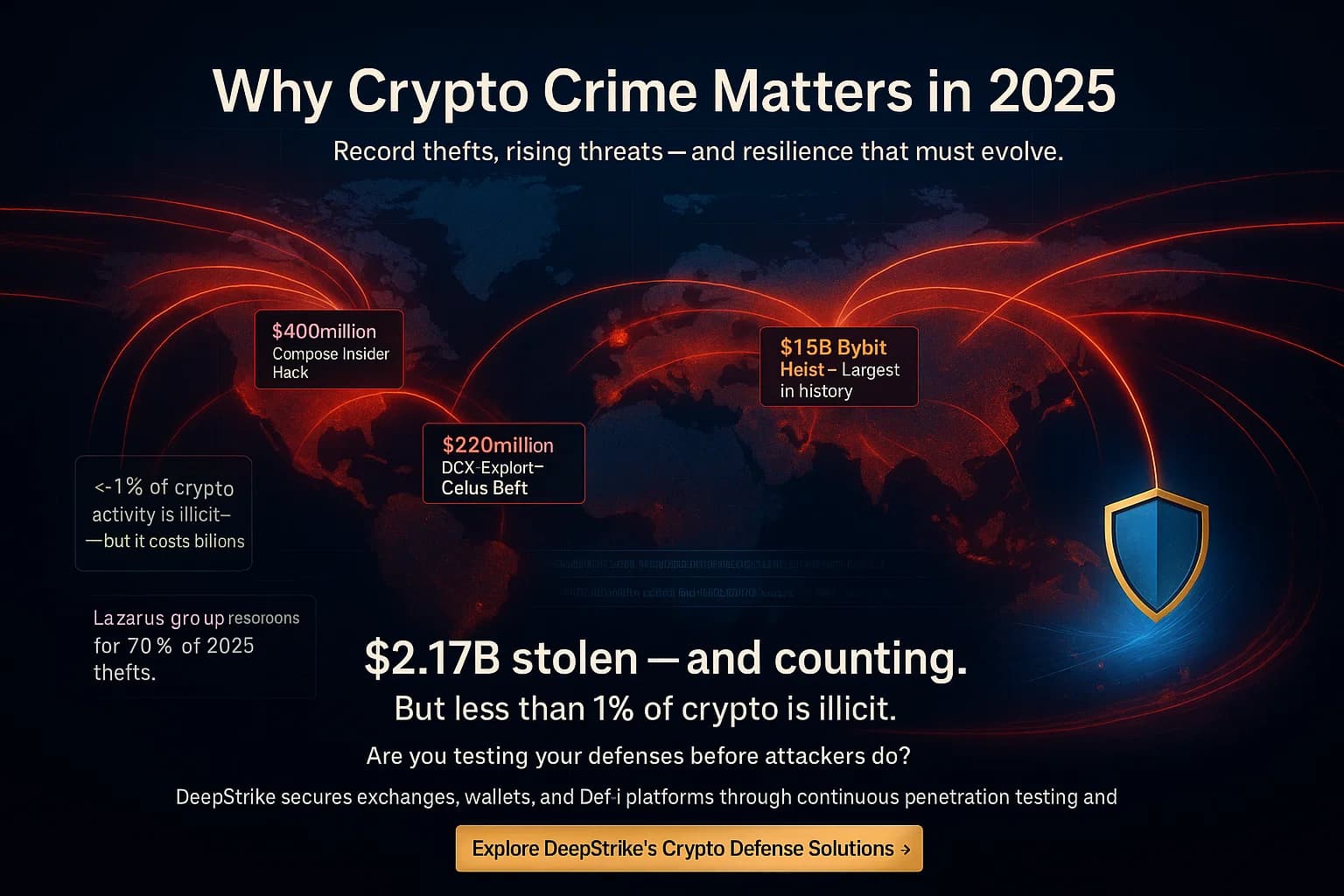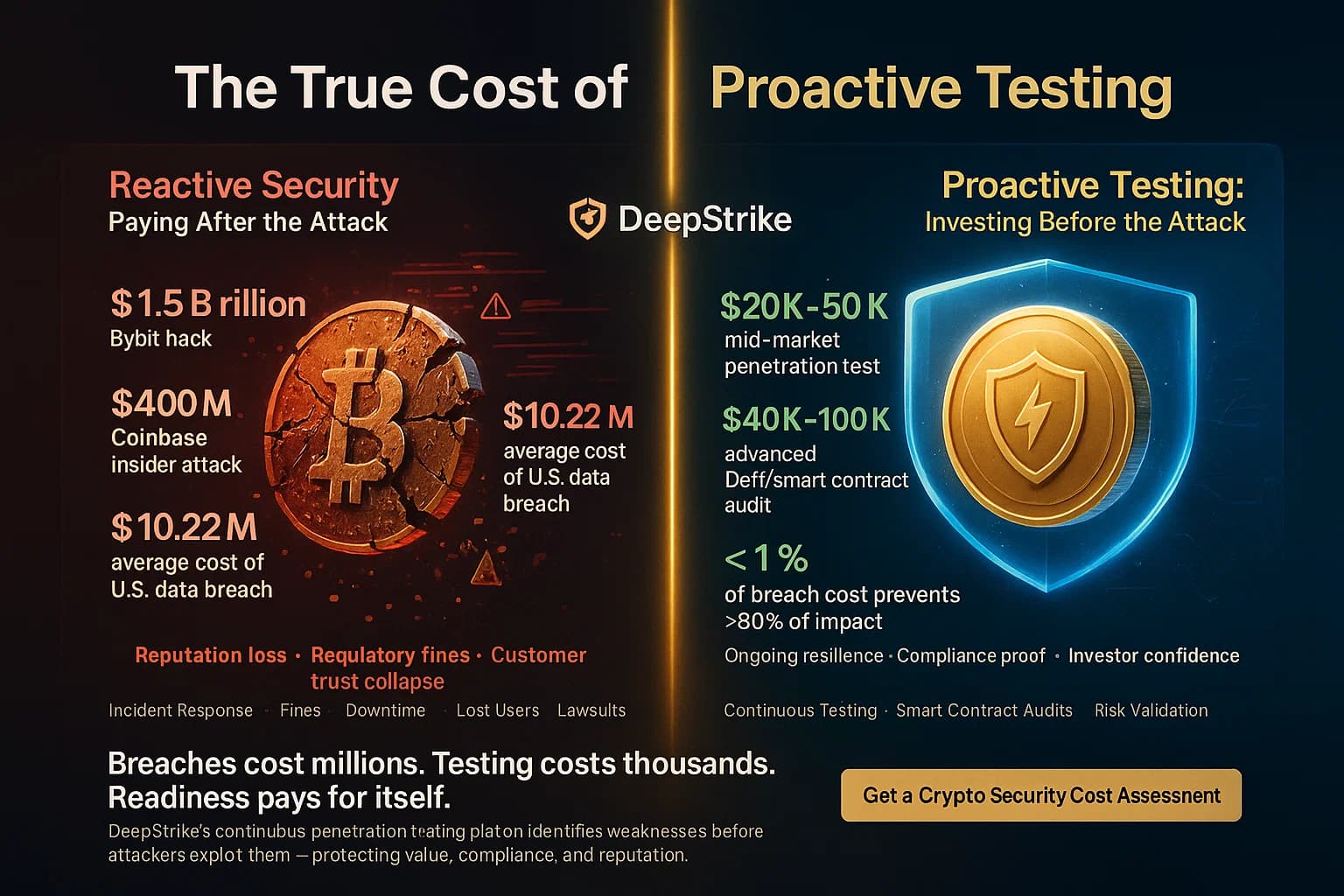November 3, 2025
Crypto crime surged in 2025 with record exchange hacks and evolving AI scams, yet illicit activity still accounts for under 1 % of blockchain transactions. Learn the facts, trends, and how to stay secure.
Mohammed Khalil

Cryptocurrency’s meteoric rise has brought both innovation and crime. Crypto Crime Report 2025 drills down on the latest trends: hackers, scammers, and even nation states exploiting digital assets. According to Chainalysis, $2.17 billion was stolen from crypto platforms by mid 2025 already more than all of 2024. Yet this frantic pace still accounts for <1% of total crypto volume, so most blockchain activity is currently legitimate. The key takeaway: as crypto adoption grows, so do the threats. This report compiles the latest data and expert insights to help you defend your assets.

Crypto crime covers any illicit activity involving cryptocurrencies or blockchain technology. That includes theft draining exchange or wallet funds, exploiting smart contracts, fraud Ponzi/ICO schemes, fake trading apps, romance/pig butchering scams, ransomware encrypting data and demanding crypto ransom payments, and money laundering using mixers, privacy coins, or corrupt exchanges to hide stolen funds. For context, criminals funneled an estimated $40.9 billion into illicit crypto addresses in 2024 likely exceeding $51B once hidden transactions are counted. Even so, that was only about 0.14% of all crypto transaction volume. In short, while the absolute dollar amounts are huge, illicit activity remains a small slice of overall blockchain usage.

The stakes are higher than ever. Millions of people and businesses now hold cryptocurrency, and criminals have taken notice. For example, U.S. authorities estimate Americans lost roughly $10 billion to crypto investment scams in 2024. Major thefts like the $1.5B Bybit hack and widespread fraud undermine confidence in digital finance. Meanwhile, law enforcement has dramatically stepped up actions. In Oct 2025 the DOJ seized over $15 billion from a massive pig butchering scam networkjustice.gov, the largest crypto asset seizure to date. These developments mean crypto security is no longer optional but essential.

| Incident | Loss USD | Details |
|---|---|---|
| Bybit exchange hack Feb 2025 | $1,500,000,000 | DPRK affiliated hackers stole 1.5B ETH via a compromised multi signature process on Bybit, the largest crypto theft on record. |
| Coinbase support breach May 2025 | $180,000,000- $400,000,000 | Bribed Coinbase support agents exfiltrated user account data and demanded ransom. Coinbase ultimately refused the $20M demand and neutralized the breach. |
| Cetus DEX exploit May 2025 | $220,000,000 | Attackers deployed malicious token contracts on Cetus, a Sui based decentralized exchange to drain its liquidity pools. Funds are now frozen pending recovery efforts. |
| Prince Group scam bust Oct 2025 | $15,000,000,000 | U.S. DOJ indicted Chen Zhi of Prince Group for orchestrating global pig butchering scams. Authorities filed forfeiture on 127,000 BTC $15B stolen from victims a record crypto asset seizure. |

Data breach costs are staggering: the average U.S. breach now runs about $10.22 million. In contrast, proactive security is far cheaper. A mid market penetration test might only cost $20K- $50K. The table below illustrates the payoff of prevention:
| The Incident Reactive Cost | The Investment Proactive |
|---|---|
| $10.22M Avg. U.S. data breach 2025 | $20K- $50K Mid market pentest |
| $2.2B Total crypto stolen in 2024 | $40K- $100K Audit of a complex DeFi smart contract |
| Lost trust & fines Reputation damage, regulatory penalties | Stronger security posture Customer trust, regulatory compliance |
Spending even tens of thousands on a thorough security review can prevent losses in the millions or billions. Think of it as insurance for your crypto business: a small premium now to avoid catastrophic breach costs later.

The crypto landscape of 2025 saw both record setting thefts and unprecedented crackdowns. Digital assets remain attractive to crooks, but coordinated enforcement efforts are disrupting many schemes. Organizations can no longer afford complacency: with billions on the line, proactive security measures are mandatory. By staying informed about evolving threats from state sponsored hacks to AI enhanced scams and investing in defenses, secure architecture, pentesting, continuous monitoring, businesses and individuals can significantly reduce risk.
Ready to strengthen your defenses? The threats of 2025 demand more than just awareness; they require readiness. If you're looking to validate your security posture, identify hidden risks, or build a resilient defense strategy, DeepStrike is here to help. Our team of practitioners provides clear, actionable guidance to protect your business.

Explore our penetration testing services to see how we can uncover vulnerabilities before attackers do. Drop us a line we’re always ready to dive in.
Mohammed Khalil is a Cybersecurity Architect at DeepStrike, specializing in advanced penetration testing and offensive security operations. With certifications including CISSP, OSCP, and OSWE, he has led numerous red team engagements for Fortune 500 companies, focusing on cloud security, application vulnerabilities, and adversary emulation. His work involves dissecting complex attack chains and developing resilient defense strategies for clients in the finance, healthcare, and technology sectors.
It has been massive. In 2024, criminals stole roughly $2.2 billion in crypto from various hacks and scams. By mid 2025 that figure jumped to $2.17 billion from crypto platforms alone, most of this was from one event, the $1.5B Bybit hack.
The record now belongs to the Feb 2025 Bybit exchange hack. DPRK linked hackers stole about $1.5 billion in Ethereum, surpassing all previous crypto heists by a wide margin.
In absolute dollars, losses are up more was stolen in 2025. But crypto activity is also soaring: analysts find illicit transfers were only 0.14% of on-chain volume in 2024 down from 0.61% in 2023. TRM Labs similarly reports about 0.4% of transactions were illicit in 2024. In other words, the percentage of crypto used in crime is tiny, but the total sums at risk are significant and rising.
Everyone: individuals, businesses, and governments. Consumers often fall for scams, while exchanges and fintech firms face hacks and insider fraud. State sponsored groups focus on high value infrastructure for instance, North Korea’s Lazarus Group targeted exchanges and crypto firms in 2024- 2025. If you handle crypto or have valuable data, you could be a target.
Aggressively. U.S. and international agencies have charged key perpetrators and seized enormous assets. For example, DOJ actions recovered over $15B from global romance scam rings. Treasury’s FinCEN has sanctioned crypto laundering networks like Huione. Interpol led operations like HAECHI VI coordinated 40+ countries to recover $439M cash+crypto from fraudsters. Regulators now force crypto platforms to enforce strict KYC/AML and report suspicious transactions, closing many loopholes.
It’s a scam where criminals befriend victims often on social media or dating apps, build trust, and coax them into fake crypto investments. Early small returns lure victims into investing more; eventually the scammers disappear with all the money. Global authorities say pig butchering has drained billions from victims worldwide. The Prince Group case above is a prime example of this tactic.
Use strong security hygiene. Keep the bulk of crypto in cold/hardware wallets, enable MFA on all accounts, and use unique, complex passwords. Double check any investment or transfer requests, especially unsolicited ones. For organizations: invest in security reviews and training. Regular penetration tests and code audits of your crypto systems can find vulnerabilities before hackers do. Staying on top of security best practices is essential.

Stay secure with DeepStrike penetration testing services. Reach out for a quote or customized technical proposal today
Contact Us